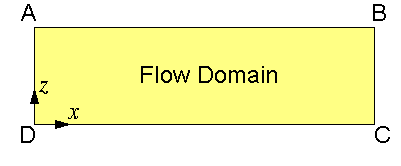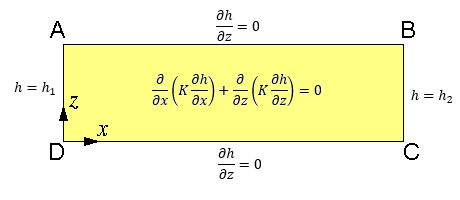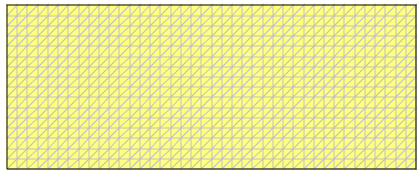The rectangular flow domain is assumed to be bounded on the left and right sides (AD and BC) by specified head boundaries, and on the top and bottom (AB and DC) by no-flow boundaries. Assuming that the head along AD is higher then the head along BC, the average flow is from left to right.
The rectangular flow domain could represent either a vertical section or a horizontal plane.










